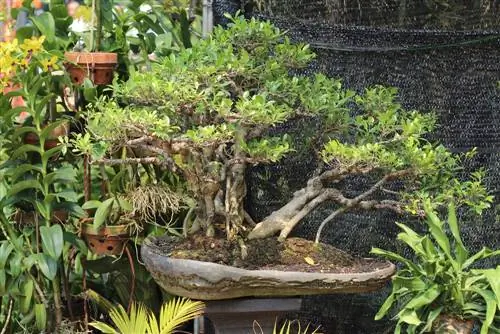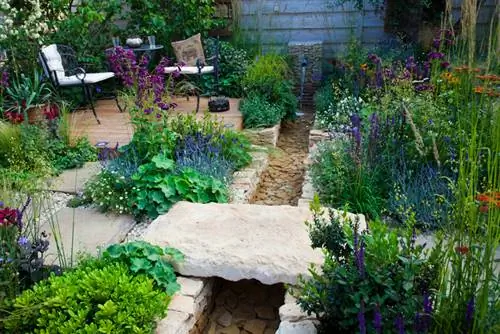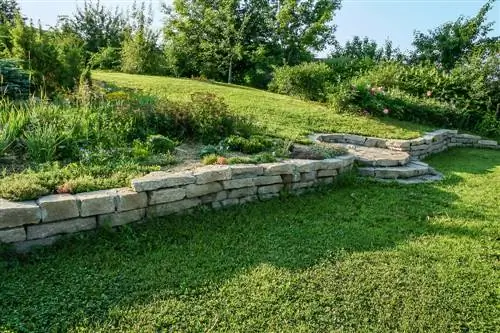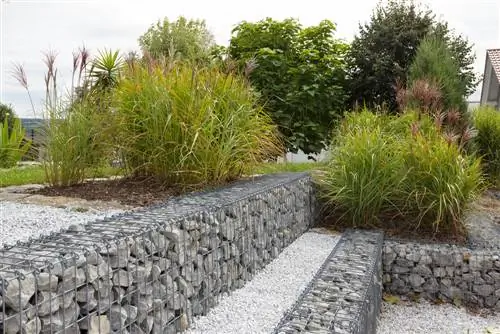- Author admin [email protected].
- Public 2023-12-16 16:46.
- Last modified 2025-06-01 06:02.
With elegance and Asian charm, garden bonsai give your green kingdom a magical aura. Cultivated by masters over the course of decades, the shapely trees are considered the epitome of luxurious garden art. We invite you to take a foray through the ideal tree species - beautiful to look at as garden bonsai and pleasingly easy to care for.

Which types of garden bonsai trees are recommended and how do I care for them?
Suitable garden bonsai tree species include mountain pine, Korean fir, Japanese maiden pine, Japanese yew, Chinese juniper and columnar cypress. For proper care, choose a sunny to partially shaded location, humus-rich and nutrient-rich soil, water regularly and fertilize organically.
Recommended tree species with a garden bonsai license
To add a touch of luxury to the classic front garden, a Japanese garden or balcony and terrace, garden bonsai are very popular. Investing in a floral work of art needs to be carefully considered. Up to 30 years of careful craftsmanship by experienced experts go into each individual example, so that the purchase price can be on a par with gold and precious stones. Therefore, choose the following robust types of trees so that subsequent care does not cause you a headache:
- Mountain pine (Pinus mugo), scores with flexible location tolerance
- Korea fir (Abies koreana), tolerates cutting and is undemanding
- Japanese girl pine (Pinus parviflora), the premium species for an XXL bonsai
- Japanese Yew (Taxus Cuspidata), the ideal garden bonsai for beginners
- Chinese juniper (Juniperus chinensis), one of the best tree species for macro bonsai
- Columnar cypress (Chamaecyparis laws) for bonsai gardeners with a penchant for rarities
These conifers are characterized by good pruning tolerance, a basic requirement for cultivation as a garden bonsai. Evergreen, small-leaved trees are also predestined for the artistic design of outdoor bonsai. Here, box trees (Buxus) and mountain ilex (Ilex crenata) are at the top of the ranking. In addition to these classics, outsiders are enjoying increasing popularity. There is nothing wrong with training a corkscrew willow (Salix matsudana) as a bonsai for the garden.
Properly care for garden bonsai - this is what you should pay attention to
If your new showpiece finds the right location in the garden and receives expert care, your garden bonsai will last for decades. We have put together the key points for successful cultivation for you below:
- Sunny to partially shaded location
- Humoser, loose, nutrient-rich soil
- Fresh to moist and well-drained
- Only water when the soil is noticeably dry
- Water garden bonsai in a pot more often than outdoors
- Fertilize organically every 4 weeks from March to September
- Provide bonsai in a pot with light winter protection
As a new owner, it is up to you to decide how to properly cut a garden bonsai. The primary focus is on species-specific criteria, which a competent salesperson will explain to you. In general, practice has shown that moderate, regular cutting is preferable to radical, one-off pruning. Suitable dates for topiary cutting are late winter and early spring. At this time, a thorough thinning of the trees is also on the agenda.
Tip
Boulders and garden bonsai present themselves as a unique combination in creative garden design. If you arrange the gnarled shape of a stunted pine bonsai next to the stone force of a mighty boulder, you will create a natural eye-catcher in the garden whose fascination no viewer can escape.






